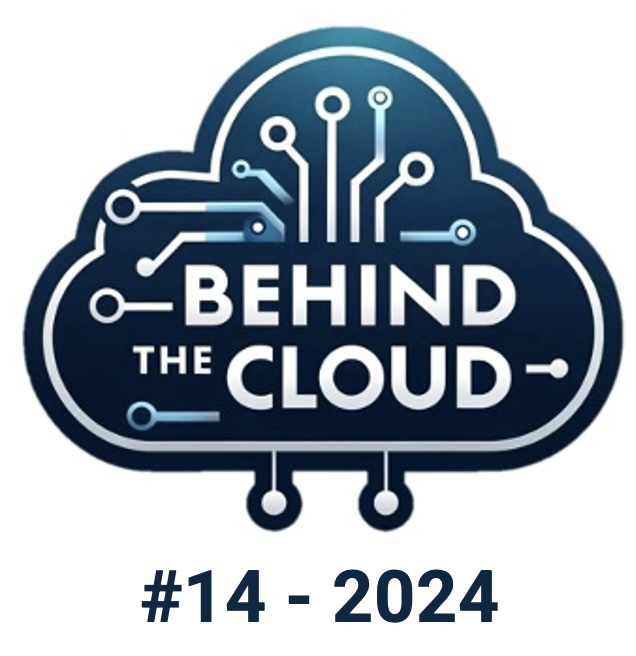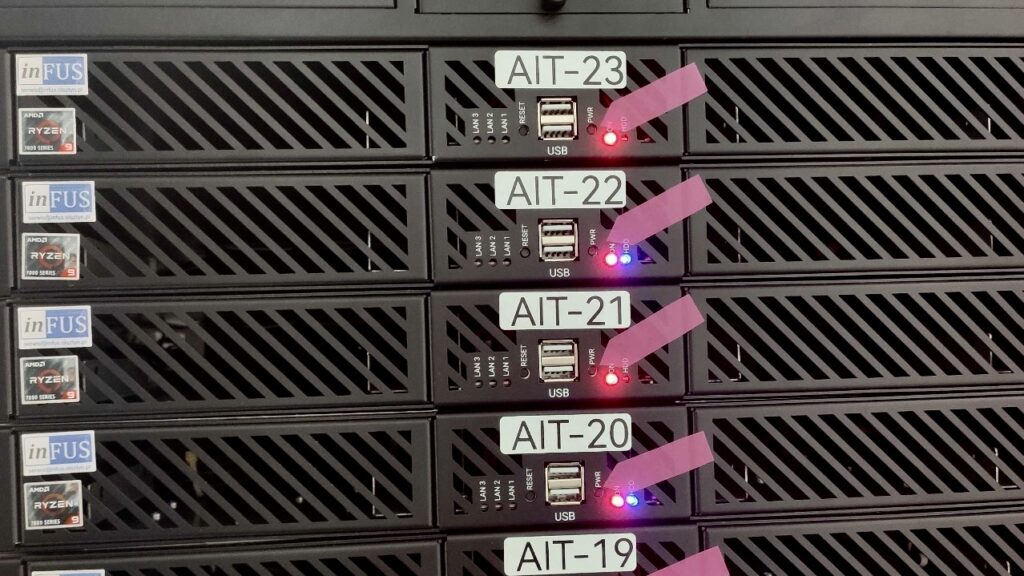
Hardware Solutions for AI and Machine Learning in Asset Management

#14 - Behind The Cloud: High-Performance Computing and Infrastructure (2/7)
Hardware Solutions for AI and Machine Learning in Asset Management
August 2024
As asset management firms increasingly rely on Artificial Intelligence (AI) and Machine Learning (ML) to gain a competitive edge, the choice of hardware becomes a critical factor in determining the success of these technologies. The performance, cost-efficiency, and scalability of AI applications are directly influenced by the hardware solutions that underpin them. In this chapter, we will explore the various hardware options available for AI and ML, focusing on their strengths, weaknesses, and typical use cases in the financial sector.
The Role of Specialized Hardware in AI
AI and ML workloads are inherently different from traditional computing tasks. They require significant computational power to process large datasets, train complex models, and perform real-time analysis. This has led to the development of specialized hardware designed to accelerate these processes, providing the necessary speed and efficiency that traditional Central Processing Units (CPUs) cannot deliver alone.
Key hardware solutions include Graphics Processing Units (GPUs), Tensor Processing Units (TPUs), and Field-Programmable Gate Arrays (FPGAs). Each of these has unique capabilities that make them suitable for specific AI tasks, allowing asset management firms to tailor their infrastructure to their specific needs.
Graphics Processing Units (GPUs)
GPUs have become the go-to hardware solution for AI and ML due to their ability to handle massive parallel computations. Originally designed for rendering graphics in video games, GPUs are now widely used in deep learning because they can process thousands of operations simultaneously. This parallelism is particularly advantageous in training deep neural networks, where large amounts of data need to be processed quickly.
Strengths:
- Parallel Processing: GPUs excel at parallel processing, making them ideal for tasks that require simultaneous computation, such as matrix multiplications in neural networks.
- High Throughput: GPUs offer high computational throughput, allowing for faster training times for AI models.
- Mature Ecosystem: The ecosystem around GPUs is well-developed, with extensive software support, including popular frameworks like TensorFlow, PyTorch, and CUDA.
Weaknesses:
- Power Consumption: GPUs are power-hungry, which can lead to higher operational costs.
- Cost: High-performance GPUs can be expensive, particularly when scaling up for large AI workloads.
- Specialized Knowledge: is needed and GPUs can only be used for some tasks, not all.
Use Cases:
- Training and inference of deep learning models.
Tensor Processing Units (TPUs)
TPUs are specialized hardware accelerators developed by Google specifically for AI and machine learning tasks. They are optimized for TensorFlow, Google’s open-source ML framework, and are designed to deliver high performance while consuming less power than traditional GPUs.
Strengths:
- Optimized for AI: TPUs are designed specifically for AI workloads, providing optimized performance for machine learning tasks.
- Energy Efficiency: TPUs offer better energy efficiency compared to GPUs, reducing operational costs.
- Integration with Cloud Services: TPUs are available as part of Google Cloud’s offerings, making them easily accessible and scalable for cloud-based AI applications.
Weaknesses:
- Less Performance: compared to Nvidia GPUs
- Limited Flexibility: TPUs are highly specialized, which can limit their use outside of specific AI tasks
- Vendor Lock-In: Since TPUs are a Google product, firms may face challenges if they wish to migrate away from Google’s ecosystem.
- Cost: TPUs can also be expensive.
Use Cases:
- High-performance deep learning tasks.
- Large-scale ML training.
- Cloud-based AI applications requiring scalable solutions.
Field-Programmable Gate Arrays (FPGAs)
FPGAs offer a different approach to AI acceleration by providing hardware that can be reconfigured for specific tasks. This flexibility allows FPGAs to be tailored to specific workloads, making them useful in environments where AI tasks vary or evolve over time.
Strengths:
- Customizability: FPGAs can be reprogrammed to optimize performance for specific tasks, offering versatility that other accelerators may lack.
- Low Latency: FPGAs are known for their low latency, making them ideal for real-time applications such as high-frequency trading.
Weaknesses:
- Complexity: Programming FPGAs requires specialized knowledge, which can be a barrier to adoption for some firms.
- Higher Costs: While operational costs may be lower, the initial cost and effort to implement FPGAs can be higher than other solutions. In general terms, the cost of FPGAs is high.
Use Cases:
- Real-time data processing in high-frequency trading.
- Custom AI applications where flexibility and low latency are critical.
- AI tasks that require optimization for specific workloads.
Low-Cost Parallel CPU Solutions
While GPUs, TPUs, and FPGAs dominate the conversation around AI hardware, it’s important to note that not all AI tasks require these high-end accelerators. In some cases, low-cost parallel CPU solutions can be a more practical and cost-effective choice, especially for tasks that cannot be efficiently computed using specialized hardware.
Strengths:
- Cost-Effective: Parallel CPUs offer a lower-cost alternative for tasks that do not require the high performance of GPUs or TPUs.
- Versatility: CPUs can handle a wide range of tasks, making them a good all-around solution for general-purpose computing.
- Scalability: Scaling CPU-based solutions is easier than scaling GPU solutions.
Weaknesses:
- Lower Performance: CPUs generally offer lower performance for parallel processing tasks compared to GPUs and TPUs.
Use Cases:
- Preprocessing data for AI models.
- Portfolio optimization.
- Running less computationally intensive AI algorithms.
- Supporting general-purpose tasks in conjunction with specialized hardware.
Impact of Hardware Selection on AI Performance, Cost, and Scalability
Choosing the right hardware is crucial for optimizing AI performance, controlling costs, and ensuring scalability. For asset management firms, the decision often involves balancing the need for high performance with budget constraints and future growth plans.
- Performance: The choice of hardware directly affects the speed and efficiency of AI tasks. For example, using GPUs for deep learning can drastically reduce training times compared to CPUs, enabling faster deployment of AI models.
- Cost: While high-end accelerators like GPUs and TPUs offer superior performance, they also come with higher upfront and operational costs. Firms need to assess whether the performance gains justify the investment.
- Scalability: As AI workloads grow, the ability to scale hardware solutions becomes increasingly important. Cloud-based options like TPUs offer easy scalability, while on-premises solutions may require significant infrastructure investment.
Conclusion
The choice of hardware is a critical factor in the success of AI and machine learning initiatives in asset management. By understanding the strengths and limitations of GPUs, TPUs, FPGAs, and parallel CPU solutions, firms can make informed decisions that align with their performance needs, budget constraints, and long-term goals.
In the next chapter of “Behind The Cloud,” we will explore the role of cloud computing in AI, examining how cloud services can offer scalable, flexible, and cost-effective solutions for asset management firms looking to leverage AI.
Thank you for following our third series on “Behind The Cloud”. Stay tuned to “Behind The Cloud” as we continue to unpack the critical components of AI infrastructure in asset management in the coming weeks.
If you missed our former editions of “Behind The Cloud”, please check out our BLOG.
© The Omphalos AI Research Team – August 2024
If you would like to use our content please contact press@omphalosfund.com




